
Key Takeaways
- Insulating and sealing your home reduces energy loss, improving efficiency.
- Unplug devices when not in use and opt for LED lighting to cut down on energy use.
- Unplug devices when not in use and opt for LED lighting to cut down on energy use.
Energy-efficient home improvements are not only good for the environment but can also lead to significant long-term cost savings. Simple changes like switching from old lightbulbs to LED ones can have a noticeable impact. Larger upgrades, such as investing in a smart thermostat or adding insulation, are more substantial investments that pay off over time by reducing energy usage. Many of these improvements can be completed in a day or less, making them convenient as well as beneficial.
Additionally, these upgrades often qualify for tax credits, providing another incentive to consider making your home more energy-efficient.
Read on for 75 ways to make your home energy-efficient and save energy for a better tomorrow! The tips are divided into five categories: technology, home, lighting, lifestyle changes, and home appliances.
Energy Consumption Statistics
Before delving into methods to conserve energy, it’s crucial to understand why it matters. The statistics underscore the significant impact of energy consumption: despite having less than 5% of the global population, the United States consumes 16% of the world’s energy. On average, each person in the US uses 12 kilowatt-hours (kWh) of electricity per day. This heavy energy use contributes to 14% of global energy-related carbon dioxide (CO2) emissions. Given these figures, it’s clear that taking steps to save energy is more important than ever.
HVAC Tips to Save Energy
1. Invest in Energy-Efficient HVAC Systems
HVAC appliances are one of the biggest energy hogs. 43% of a home’s utility bill goes to heating and cooling expenses. Upgrading outdated systems with modern, efficient models can lead to significant savings on your utility bills while benefiting the environment. On average, Energy Star-certified air conditioners can save up to 8% in energy consumption compared to regular air conditioners on the market.
When purchasing new HVAC equipment, it is also important to look for energy efficiency ratios, like the Seasonal Energy Efficiency Ratio (SEER). A higher SEER rating means higher appliance efficiency and more energy savings.
The new 2023 standards require residential systems to have a seasonal energy efficiency ratio (SEER) of at least 14 SEERs in the northern United States and 15 SEERs in the southern United States. HVAC units with SEERs in the mid-20s are available, leading to even greater energy savings.
2. Make Your Home Climate Smart
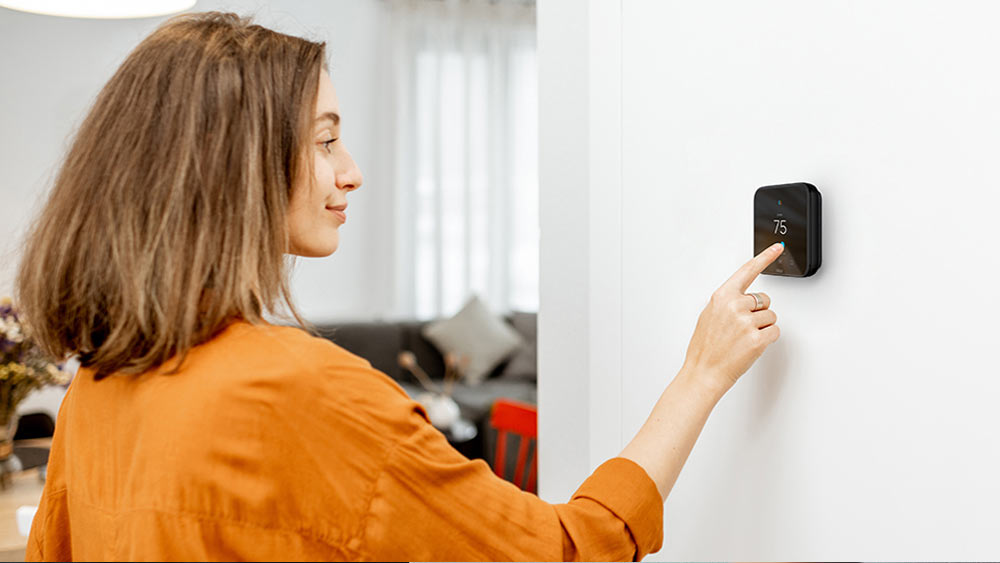
With smart home devices, you can make your home smart and energy-efficient. The best part is that you don’t have to break the bank to enjoy the benefits. For instance, consider a smart thermostat for mini-splits. They can make your room ACs (mini-splits, windows, or portable units) smart in minutes. If you have a central system, you can pair your unit with a smart thermostat.
These smart climate control devices provide features like scheduling, energy usage tracking, geofencing, and more so you can effortlessly optimize your home climate while reducing your energy bills.
Equip your HVAC system with smart features and achieve the perfect balance between comfort & savings.
Learn more
3. Choose the Correct Thermostat Location
A thermostat should be strategically placed in a central location to ensure proper operation. Ideally, place your thermostat on an interior wall away from direct sunlight, drafts, and appliances that generate heat. This ensures accurate temperature readings and prevents the thermostat from cycling your HVAC system unnecessarily. Avoid locations near windows, doors, or areas with frequent temperature fluctuations, as these can lead to inaccurate readings and inefficient operation
4. Opt for Room Air Conditioners
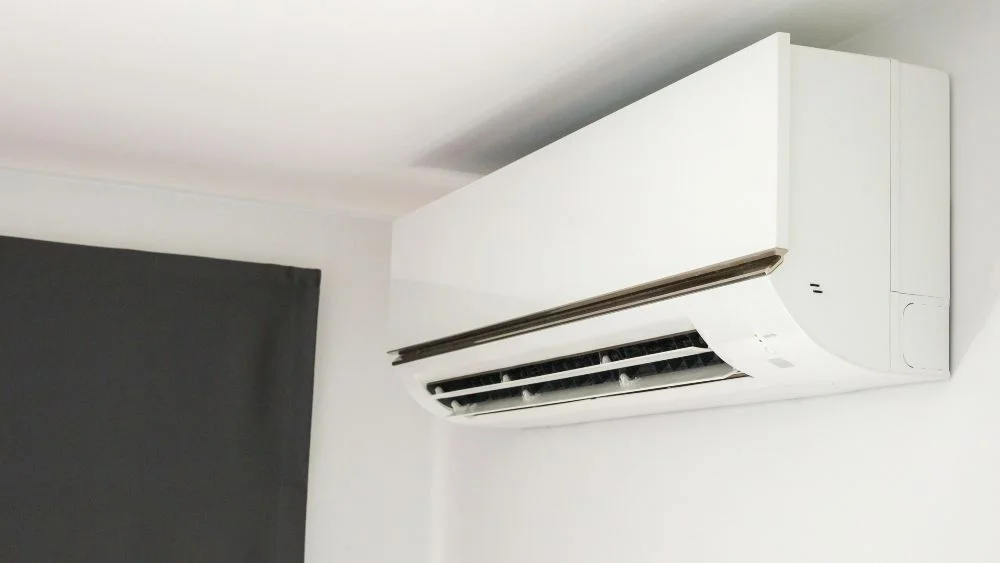
Room units such as mini-split heat pumps are becoming quite popular due to their energy efficiency. Unlike central systems that waste energy through leaky ducts, these individual units do not require ductwork for installation. Plus, you only cool or heat the rooms you are using. This targeted approach saves big on your electric bill as you are not paying to heat/cool an empty room. Plus, you can personalize the temperature in each space.
Tip: Pair your room AC with a mini-split thermostat to save up to 25% on air conditioning bills. Smart features such as scheduling, geofencing, and energy usage tracking help you automate your home climate for maximum comfort and savings.
Your best choice to make any mini-split, window,
or portable AC smart. Enhance your comfort and savings.

5. Regularly Change the Filters
Your air filters should be cleaned every two weeks and replaced every 3-4 months. When filters get clogged, they obstruct the air intake, causing your HVAC unit to use more energy to achieve the desired heating or cooling output. This can be quite costly, as it results in more energy consumption.
6. Keep up With Regular HVAC maintenance
It’s crucial to regularly inspect and maintain your HVAC system. If your heating and cooling system isn’t functioning properly, following other energy-saving tips won’t be as effective. By adhering to a routine maintenance checklist, you can ensure all necessary tasks for your HVAC are completed. Here’s all you need to know about regular HVAC maintenance.
Also, consider going for professional maintenance at least once a year. A professional can ensure your system operates efficiently, adjusting settings as needed and checking that all parts are in good condition.
Related: HVAC Maintenance Costs: What Every Homeowner Should Know
7. Use Dehumidifiers
Dehumidifiers can be a significant source of comfort and energy savings if you live in an incredibly humid area. High humidity can make you feel warm or hot, prompting you to run the air conditioning on full blast, which can be very energy-consuming.
To achieve the ideal indoor humidity, a dehumidifier can be used. It reduces the room’s humidity by a fraction of the energy consumption of an air conditioner.
Related: Ideal Indoor Humidity Summer Guide – Comfort Unlocked
8. Adjust Your Thermostat for Energy Savings
According to the U.S. Department of Energy, the ideal temperature setting for savings is 78F in summer and 68F in winter. When you’re away from home, adjusting the thermostat higher or lower (depending on the season) can help minimize the workload on your HVAC system. Setting back your thermostat by 7 to 10 degrees for eight hours can lead to savings of 10% on your annual bills.
9. Save Energy by Using Fans
Another way to reduce energy usage is to use ceiling fans. They consume a fraction of the energy compared to air conditioners and help create a breezy flow in your home. Fans have a lower maintenance cost and can be used both in the winter and summer.
A more efficient way to achieve energy savings while cooling is to use both air conditioners and fans together. The cooling effect of the fan allows you to set your AC a few degrees higher than usual, reducing energy consumption.
In summer, your fan should be oriented counterclockwise, while in winter, it should be reversed clockwise. This will pull the cold air up and force the warm air down, helping you stay warm.
10. Track AC Usage
By tracking your usage, you can determine which appliances are taking up a significant chunk of your energy bills and why. You can then cut down on these extra costs by turning off those appliances when they’re not in use. You can track AC usage history with the help of a smart thermostat and manage your energy consumption.
11. Routinely Perform HVAC Energy Audits
An HVAC energy audit can help slash your energy bills. This comprehensive assessment analyzes your heating and cooling system and also uncovers hidden energy drains. From leaky ducts to inefficient equipment, the audit identifies areas for improvement. Using the insights from the audit, you can make targeted upgrades, like sealing leaks or upgrading to a more efficient system.
Insulation & Ventilation Tips for Energy Efficiency
12. Improve Home Insulation
Home insulation is essential in all seasons to save energy. It also helps lower your bills by retaining heat during the winter season and keeping heat out of your home during summer. The level of insulation depends on the area of your house. Crawlspace, floors, walls, attic, and basement are the main areas where good insulation can help you save some bucks. The Home Energy Saver tool is handy for recommendations based on your house’s specifications.
Related: The Ultimate Guide to Types of Insulation
13. Seal the Leaks
Preventing air leaks during cold winters and hot summers is crucial. They reduce the efficiency of your HVAC system by allowing conditioned air to escape through gaps and cracks.
To eliminate drafts, take the following steps:
- Caulk stationary parts of windows and doors to seal any gaps.
- Apply weatherstripping to movable parts of windows and doors to create a tight seal.
- Check for open stud cavities and gaps in drywall; seal them to prevent air leakage.
- Insulate recessed lighting fixtures to prevent air from escaping through them.
- Inspect ductwork for loose connections and seal them using aluminum tape or mastic sealant to maintain air tightness.
Here’s a detailed guide on how to find and seal air leaks in your home.
14. Insulate the Attic
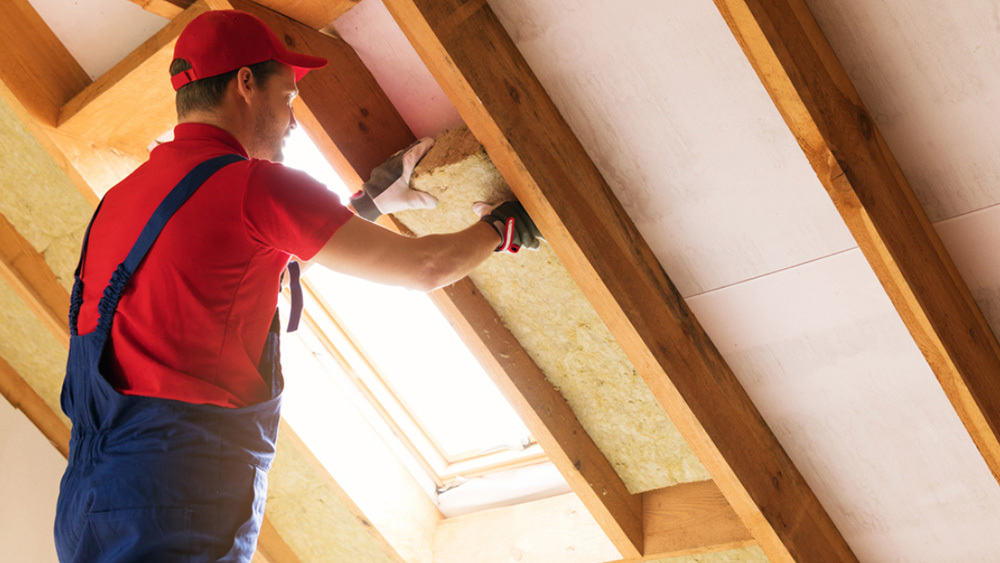
Attics are isolated spaces that often lack air conditioning, and they can get extremely hot or cold.
You should look for ways to insulate your attic. This means sealing any gaps in the attic door or its hinges so no air leaks out. Treat your attic door as you would treat your main entrance of the room. You want to seal the main entrance and keep the outside air out. The same is the case with the attic doors.
If you’re planning to install attic insulation yourself, choose blanket or loose-fill insulation, as they are the easiest for DIY projects. However, if your attic is finished, it can be challenging to insulate every corner effectively. In this case, it’s best to hire a professional who can determine and install the most suitable insulation for your attic.
15. Close Off the Fireplace When Not in Use
Fireplaces, when not actively burning, can act as open vents, allowing warm air to escape and cold air to enter, especially in winter. Therefore, a device called a fireplace damper is installed on top of the chimney, which can seal off the fireplace when not in use. By closing the damper or installing a fireplace cover, you can prevent this heat loss and reduce the workload on your heating system.
16. Save Energy by Closing the Dampers
Dampers are used to control the flow of air from the ducts of a central air conditioning system into a room. When the air conditioner is turned off, the ducts with long metal pipes store unheated/uncooled air in them. These ducts can produce drafts that push this air into the room. This effect becomes even more noticeable during the winter months, when chilly air comes into the warm and cozy place, bringing the temperature down.
To counter this and save energy, keep the dampers of your ducts closed when not in use. This prevents drafts from coming into the room and disturbing the room temperature.
17. Install an Attic Ventilator
In the summer, an attic ventilator can prevent your attic from becoming unbearably hot and stuffy. An attic bears the full brunt of the sun, and the space can become very hot. As a result, the attic radiates heat to the rooms directly below the attic, making them hot and requiring higher cooling energy to maintain a comfortable temperature.
On the other hand, an attic ventilator keeps the air circulating and prevents the attic from becoming too hot. Less heat is then radiated to the rooms below, requiring less cooling and thus saving energy.
18. Promote Air Flow
You need to keep an eye out for weak airflow in your home and make sure to prevent them. A stuffy room makes it feel hotter than it is and forces you to use air conditioning. This problem is more common in the summer months than in winter. Open your doors, windows, or vents. Moreover, you can also use ceiling fans to keep the airflow going.
19. Make Sure Air Vents Are Not Blocked
Ensure that your living space’s air conditioning is efficient enough by checking for objects that could block the air vents. Also, remove debris blockages from the air vents to improve airflow and an efficient air conditioning system.
20. Get an Outlet Gasket
Outlet gaskets prevent air drafts from entering your room through the outlets. This ensures that there are no cold air inlets in your room during the winter. Outlet gaskets are very cheap and easy to install, requiring a total of just two minutes to fit. But they can go a long way in saving you utility costs.
Lifestyle and Behavioral Tips for Energy-Saving
21. Go Solar
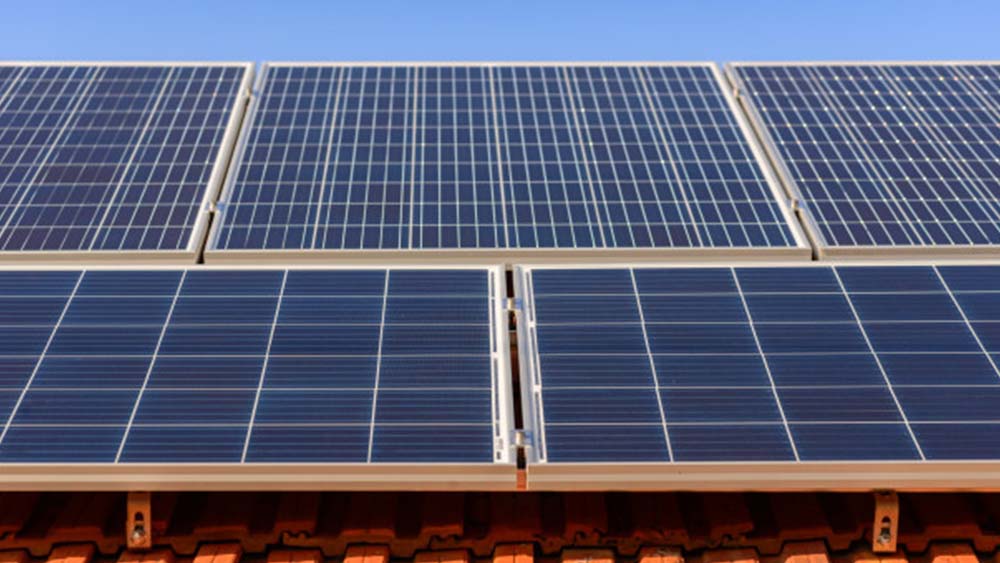
Going solar allows you to transform sunlight into clean, renewable energy for your home. This not only reduces your dependence on the traditional grid and potentially lowers your electricity bills but also offers environmental benefits.
While converting your entire home to solar power may not be feasible, there are numerous small ways to incorporate solar technology into your daily life. For example, you could opt for a solar-powered air conditioner or consider installing a solar water heater.
You can also use passive solar heating techniques to warm your home in winter. This method involves allowing sunlight to enter the home through carefully positioned south-facing windows. The warmth from the sun’s rays is absorbed by specific materials called thermal mass, which stores and retains warmth.
22. Use Passive Cooling Techniques
Utilizing passive cooling techniques is an effective strategy to reduce energy bills and enhance comfort. By designing homes with features such as strategic window placement for cross ventilation and using reflective roofing materials to reduce solar heat gain, reliance on mechanical cooling systems can be minimized. Other methods include shading devices like awnings or trees to block direct sunlight and using light-colored exterior surfaces to reflect heat. These approaches leverage natural elements and design principles to maintain a comfortable climate without the constant use of air conditioning.
23. Plant Trees
You can significantly cut down on energy costs by planting shrubs and trees. These act as a shelter by blocking sunlight in the summer season and windbreaks during winter. For winters, plant trees to the north of your house to intercept and slow the cold winds. Plant trees near large windows and or hard surfaces in the summer season to minimize landscape heat load. This energy-saving tip is one of the best for an energy-efficient home and environmentally friendly home.
24. Teach Your Kids About Saving Energy
Awareness and knowledge about energy-saving practices within the newer generation go a long way toward reducing household energy consumption. Good practices such as turning off lights when you leave the room/bathroom, closing the doors behind you, and switching off the television are some of the things that can be instilled in children through gentle reminders.
25. Enjoy Disconnected Time & Save Energy
You only sometimes have to keep all your devices plugged in all the time. Keep some downtime for yourself and unplug your devices, such as mobile phones, television, and other gadgets, to remain off the grid. Not only does it do wonders for your health, but it also cuts down on energy usage.
26. Avoid Using Screen Savers
Set your computer to hibernate or sleep mode when not in use for an extended period rather than going into screen saver mode. It may look pretty, but it still consumes energy to power the screen when there is no need for it.
27. Adjust Day to Day Behavior
Behavioral changes are significant in saving energy. An example of such a change is that instead of using a thin blanket during winter and keeping your heating at a higher setting, you can use a warmer blanket and turn down your thermostat.
28. Always Recycle
Making new things almost always takes up more energy than recycling them. Everyday objects like paper, tissue, cardboard, and glass are recyclable, saving precious energy and natural resources. As an example, recycling aluminum saves 94% of energy compared to making it from aluminum ore.
29. Optimize Furniture Placement
Proper placement of your furniture can significantly affect your energy consumption. Do not place high back chairs next to the windows, which can block natural light. Do not block the air conditioning vents in your room with tables or drawers, and leave plenty of space so that the heated or cooled air can efficiently circulate.
30. Use Candles – Create Ambience
Candles are a great way to kill two birds with one stone. You can reduce light bulb usage and also create a comfortable ambiance. Moreover, during winter, candles can provide warmth and a cozy feeling.
31. Choose Appropriate Clothes
Dress appropriately for the weather. In winter months, keep a thick sweater and wear comfortable yet warm trousers. Wearing socks is a good idea, too. During summer, dress in light and airy clothes so you feel less stuffy.
32. Go for the Prepaid Electric Bill Plan
Prepaid electric bill plans work by assigning you a specific number of power units that you can consume throughout the month. By restricting your power usage within a particular limit, you force yourself to save on energy consumption wherever you can.
33. Minimize Opening and Closing of Doors
Minimize the time for which your doors remain open. Opened doors let the warm or cold air in your room escape through, thus disturbing the overall room temperature. Keep your doors and windows closed so that no outside air can come in.
34. Pre-heat Your Food
When cooking frozen food, it is better to pre-heat it and then put it in the electric oven. This way, you do not have to use your oven range for a longer time, reducing your energy consumption. Similarly, instead of microwaving food straight from the fridge, try to take it out earlier and bring it to room temperature before you warm it.
35. Air Dry the Dishes
Instead of using a dishwasher or an automatic dryer for your dishes, leave them out on the kitchen counter to air dry. Electric dryers use a large amount of electricity to dry your dishes, and air drying does the same job with no energy cost at all.
36. Air Dry the Clothes
Rather than using a dryer, hang your clothes out to dry in the sun. This process uses no extra energy and is even recommended for clothes that can get damaged when dried in a laundry dryer.
37. Use of Burners
When using your cooking range, match the use of burners with the pot size. Using a large burner or a small pot for a small cooking task will waste extra energy and increase your utility bills. It is then a good idea to keep the large burners reserved only for preparing larger meals.
38. Use Suitable Pots
Use a pot that is proportionate to the cooking task. Cooking smaller dishes in a large pot wastes heat energy and requires longer cooking times, consuming more heat energy.
39. Take Shorter Showers
Minimize the amount of time you spend in the shower. With longer showers, not only do you waste a precious natural resource in the form of water, but you are also utilizing extra energy by using bathroom lighting.
40. Carpool
If you are going to the office and have the same route as the three other colleagues, it is better to share a ride than coming in four different cars. Less energy consumption, fewer greenhouse emissions, and you would have a good time en route!
41. Install Energy Efficient Windows
Installing energy-efficient windows is a proactive step towards reducing energy consumption. Single-pane windows are notorious for allowing significant heat loss in winter and heat gain in summer, resulting in higher energy bills. By upgrading to double-pane windows with low-emissivity coatings, you can enhance thermal efficiency and reduce the workload on HVAC systems. These windows provide better insulation by minimizing heat transfer, thus maintaining a more consistent indoor temperature year-round.
Related: Window Insulation: How to Insulate Your Windows for Year-Round Comfort
42. Apply Window Treatments
Window films are a very affordable and accessible option for covering windows. These films are best for warmer climates since they block heat, but they also help save energy in winter by blocking out cold from the outside. You can also use thick curtains to help maintain the temperature of your room.
43. Close the Garage Doors
If you have an attached garage, then the temperature of it may affect the temperature of your indoor space as chilly drafts may seep into your home during the winter and hot air during the summer.
To save on energy usage, you should always have your main garage door closed when not in use. This will prevent chilly winter winds from making your garage very cold and keep the heat out in summer.
Less extreme temperatures in the garage mean comfortable home temperature and less need for heating/cooling.
Related: Everything You Need to Know About Garage Insulation
44. Use Blinds for Shade
Closing or opening the blinds at the right time can reduce energy consumption. On hot summer days, direct sunlight can heat your home, causing you to turn up the air conditioner and use more energy.
45. Choose the Correct Paint for Your Home
It is very important to understand how the choice of paint helps you save energy. Dark colors absorb natural light, while light colors reflect it. Paint your house according to your climate. If you live in a hot area, white or pastel shared paints are your best choice. This tip will not only help you save energy but will also give your home a brand-new look!
46. Use of Reflective Coating
Reflective coatings are a cost-efficient method to save on energy bills. They can be applied to the exterior surfaces of your home. A reflective coating reflects the sun’s UV rays and prevents the indoor spaces from heating up. As a result, you do not have to use air conditioning as much or use it at a higher power setting.
47. Replace or Fix Worn Doors
If you have worn or wooden doors, they will likely allow drafts in and out of your home because they are not properly insulated and can warp in extreme temperatures. Here, you have two choices: door repair and door replacement. You can choose either of them, depending on your budget. This one-time investment will slash your utility bills in the long run.
Energy-efficient doors are a great option for trapping cold air in summer and warm air during winter. When it comes to door replacement, there are two options: Steel doors and fiberglass doors. Steel doors are strong and resistant to warping, while fiberglass doors reduce air transfer.
48. Invest in Energy-Saving Roofing Options
Roofing material is a significant factor and should be considered for an energy-efficient home. The correct choice of material, such as Energy Star metal roofing, can make a difference in overall efficiency. Roofing materials act as insulation to trap heat during winter and deflect/keep out heat during summer. Initially, the selection of a roof could be expensive, but it pays back by reducing your bill in the long run.
Efficient Use of Home Appliances to Save Energy
49. Do Full Loads of Laundry
When washing your clothes, collect them all at once and clean them with a full load rather than doing it in bits and pieces. This minimizes the usage of your washing machine and dryer, saving energy in the process.
50. Wash Clothes Using Cold Water
You do not need hot water to wash your clothes. Cold water or lukewarm water, in most cases, can do the job as effectively. By using hot water to wash clothes, you are using up energy for no additional benefit. This only increases your utility bills.
51. Low-Flow Showerheads
Older showerheads expel large volumes of water without covering much surface area. As a result, you are wasting water. Newer low-flow showerheads reduce the amount of water coming out of the showerhead but distribute it effectively so that you get the same coverage.
52. Lower the Temperature of the Water Heater
Keep the temperature of your water heater at a minimum when not in use. Turn up the temperature only when you shower or during mornings when it gets a bit chilly.
53. Switch From Gas to Electric-Powered Lawn Mower
Use an electric-powered lawn mower instead of a gas-powered one. Gasoline-powered engines are less efficient than electric motors and expel smoke and harmful gases that increase pollution. You can charge up your electric-powered lawn mower using solar power or even wind from a small turbine.
54. Clean Your Fridge
Keep your fridge clean. Accumulation of dirt, grease, and other items can reduce the efficiency of the refrigerator. The interior walls and coils do not cool as effectively when dirty compared to when they are clean.
55. Wrap Food in the Refrigerator
Make sure that everything you place in the fridge is covered. All food items should be well-wrapped. If not, they can release moisture in a fridge’s sealed environment, forcing the compressor to work harder to maintain a sufficiently cold environment.
56. Close the Refrigerator Door
Make sure the refrigerator door is closed correctly and the seals are airtight. If your food items become dislodged, they can prevent the door from closing properly, requiring extra energy to cool the refrigerator. It’s best to decide what you need and take it out quickly rather than stand with the fridge door open for a long time.
57. Adjust Refrigerator Temperature
Adjusting refrigerator temperature is a simple yet effective way to conserve energy and reduce electricity bills. Setting the refrigerator temperature to the recommended levels—typically between 35F and 38F for the fresh food compartment and around 0F for the freezer—ensures optimal food preservation while minimizing energy consumption. Refrigerators set too cold unnecessarily increase energy usage, while temperatures above the recommended range can compromise food safety and quality.
58. Fill up Your Freezer
When you open your freezer, cold air escapes, and warm air rushes in, forcing your freezer to work harder to cool down the warm air. You should keep your freezer full because the items inside help maintain the cold temperature, leaving less space for warm air to occupy. As a result, a full freezer uses less energy and works more effectively.
59. Use Convection Ovens
Use convection or toaster ovens instead of full-sized ovens for small-sized meals. These ovens use almost one-third of the energy needed for a regular oven.
60. Install Low-Flow Water Fixtures
Use low-flow water fixtures in your kitchen and bathrooms. Newer installations spread out the water much more evenly and use minimal water, meaning you can get the job done without using many natural resources.
61. Avail Non-Peak Times for High Consumption Appliances
Use your home appliances during non-peak times. During peak times (usually in the evening), energy rates are generally higher, increasing your utility bills. Hence, non-essential appliances or appliances with a high consumption rate, such as dishwashers, irons, washing machines, etc., should be used during non-peak times.
62. Turn Off the Appliances Before Holiday Trips

Before going for a long trip away, turn off non-essential appliances. Unplug your television, dishwasher, desktops, lamps, and similar household appliances. As discussed before, vampire energy consumption can take up several amounts of energy, contributing to your energy bill.
Related: What Temperature to Keep Your House While on Vacation?
63. Keep Your Appliances Well Maintained
Perform regular maintenance checks on your appliances. Even though they may not stop working, small faults can develop, reducing an appliance’s efficiency. Inefficient appliances use more energy and should be fixed as soon as possible.
They also need to be kept clean and free from dust and dirt. Dirt accumulation on devices can increase energy consumption. For example, grime on a refrigerator’s coils can make it work harder to maintain the same temperature, and dirt on the exhaust ports of a microwave can affect the appliance’s functionality.
64. Place Your Appliance in a Suitable Area
Keep your appliances in suitable areas, as per their use. It makes no sense to have your refrigerator or freezer next to your cooking range or in front of a window through which the sun shines all day long.
65. Use Energy Saving Power Strips
Phantom load, also known as standby power or vampire power, refers to the electricity consumed by devices even when they are turned off or in standby mode. This allows devices to resume operation quickly, but it also contributes to wasted energy and higher electricity bills.
Vampire loads can add around $200 to your home’s yearly energy costs. To effectively deal with phantom loads, consider using power strips that automatically cut off power to devices when not in use. Additionally, make it a habit to unplug chargers, appliances, and electronics when they are fully charged or not in use for extended periods.
Lighting Tips to Save Energy
66. Turn off the Lights & Utilize Timers
This is a straightforward way to save on energy bills: Turn off your lights in spaces that are not in use. If you forget, try using smart lighting with motion sensors to detect your absence and automatically switch off.
Additionally, light timers automatically turn off the lights at a specific time. This prevents you from accidentally leaving your lights on at night in rooms that are not in use or where lighting is not required. These timers can be used both during the day and at night, saving considerable amounts of energy.
67. Dust Your Bulbs to Increase Energy Savings
Keep your bulbs and lights clean. Dust and dirt can accumulate and make them seem less bright, forcing you to use more light bulbs than necessary. Periodic dusting and cleaning can go a long way toward reducing energy bills.
68. Get Colored Lampshades
Colored lamp shades give the effect of more lighting in the room and can light up your indoor space. With a brightly colored lampshade, one lamp can sufficiently light up the whole room. This can save you the cost of using an extra light bulb.
69. Install Dimmers on Lights
Most times, you do not need your lights to work at full power. Sometimes, you require only minimal lighting in the room. This is where dimmers come in handy and can reduce the amount of power the light consumes, reducing brightness and energy usage.
70. Replace Incandescent Bulbs
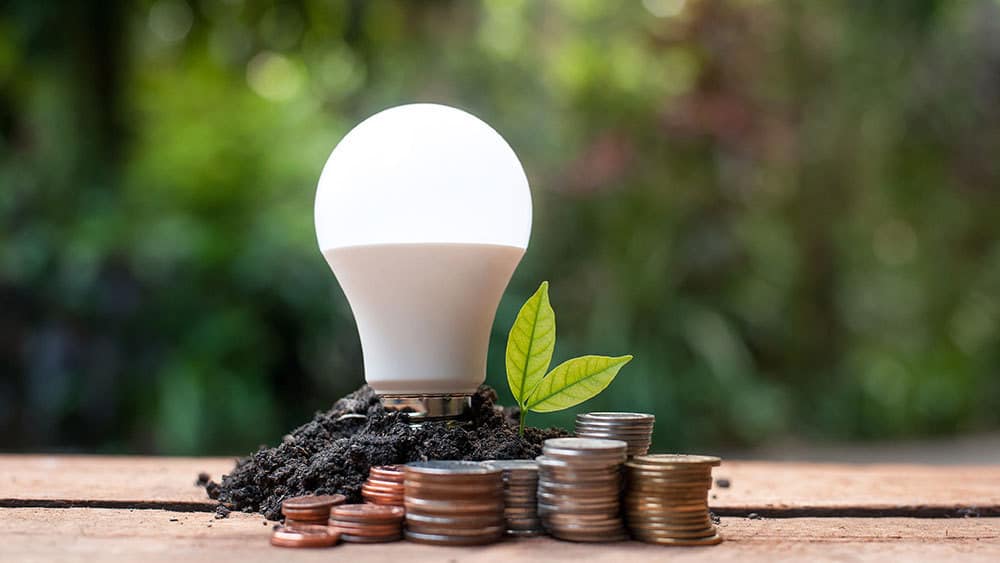
Incandescent bulbs are the oldest type of light bulbs and take up the most power. If you are looking to save energy, you will be better off by replacing all your incandescent bulbs with LED light bulbs or compact fluorescent lamps (CFL).
LEDs are an efficient lighting alternative that significantly helps save money and energy. They use at least 75% less energy than typical incandescent bulbs. LED lights last longer, with an average life span of 30,000-50,000 hours.
71. Reduce the Wattage & Compare Lumens
All your bulbs do not have to be high power. Select the wattage of your bulbs, depending on the need. Brightly lit rooms can be uncomfortable and waste a lot of energy. While lumens is the amount of light a bulb produces, wattage is the amount of energy it consumes.
72. Install Sky Lighting
An energy-efficient skylight can help minimize your heating, cooling, and lighting costs. These involve transparent spaces in the ceiling to allow sunlight to focus its warmth in a room. With plenty of direct sunlight, you do not require light bulbs or extra heating.
a plan should be created for different light sources in the kitchen. For instance, use small overhead lights if you are making tea, or turn on the spotlights at night to cook, and so on.
73. Invest in Light Fixtures
Chandeliers may look very elegant in your interior decor, but they are highly inefficient light sources. They consume a large amount of electricity to power up multiple light bulbs but without proportionate illumination. It is a better idea to eliminate chandeliers and opt for other light sources, like LED spotlights, that can help you save energy.
74. Use Mirrors to Enhance Natural Light
Mirrors are good light reflectors. They can make a room feel airy and spread the light around. Coupled with windows or a skylight, a mirror in the room can reflect the natural light around and reduce your dependence on light bulbs or other electrical light sources, thus saving energy.
75. The Most Useful Tip
You have 74 different ways to save energy, but they will only be useful if you follow them! The last and final tip is to be mindful of your energy consumption and follow as many tips as possible to save energy. Even if you follow half, you are in line for significant energy savings!
The Takeaway
By starting to save energy today, you not only benefit yourself financially but also contribute positively to the environment you inhabit. Making small changes, such as adjusting thermostat settings, upgrading to energy-efficient appliances, and practicing mindful energy consumption habits, can make a significant difference in reducing your environmental footprint while saving money. Start saving energy from today for yourself and for the environment you live in!









3 Comments. Leave new
What about installing awnings. Do they help
Yes, by blocking out direct sunlight, awnings can help maintain a cooler indoor temperature.
Good day! I could have sworn I’ve been to this site before but after reading through some of the post I
realized it’s new to me. Anyhow, I’m definitely delighted I found it and I’ll be book-marking and checking back often!